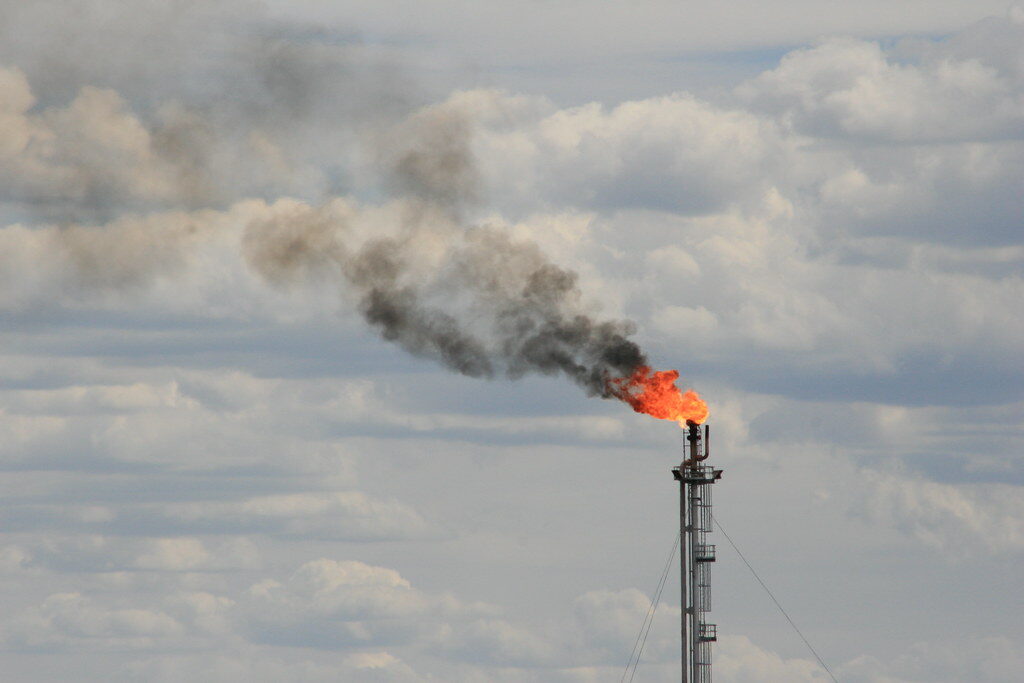For two action-packed weeks in early November, all eyes will be on Glasgow as the world’s leaders meet at what’s been dubbed as the most important international climate summit in years: COP26.
This is the world’s opportunity to deliver a credible, binding response to the climate disaster we currently face, and it must be taken seriously. The latest science has made abundantly clear that global emissions need to plummet this decade. Avoiding climate catastrophe now depends on every country bringing the most ambitious commitments and actions they can muster to the table. And this is what COP26 intends to coordinate.
There’s likely to be a whole lot of policy talks, target announcements and fancy jargon thrown around in the lead up to and during the summit, so treat this explainer as your go-to guide to see you through COP26, and get you up to speed on what it’s all about and why it’s so important.
First things first… What does COP26 actually stand for?
‘COP’ refers to the Conference of the Parties to the United Nations Framework Convention on Climate Change (‘UNFCCC’), which is the peak decision-making body for the world’s climate change commitments.
The ‘26’ signifies that this is the 26th Conference of the Parties. They usually happen annually, though COP26 was delayed by a year due to COVID19.
Basically, COP26 will be a 2 week-long series of conferences, talks and discussions between global leaders to discuss their climate commitments and work out ways for coordinating efforts to combat climate change going forward.
Where will COP26 be held and who is going?
This year’s COP is hosted by the UK and Italy and is being held in Glasgow, Scotland. So far, 100 political heads of government have confirmed their attendance, making COP26 the largest political gathering the UK has ever hosted. Australia will have government representatives in attendance, but it’s still unclear whether Prime Minister Scott Morrison will be among them.
As well as government officials and delegates, a whole range of media personnel, representatives from climate organisations, business, academia and state and local governments from all over the world will also be going along to the summit.

Why is this year’s COP meeting so important?
COP26 is being heralded as one of the most important climate events of the decade, and for good reason, too – global emissions MUST plummet this decade if we are to avoid catastrophic climate impacts. Importantly, COP26 falls around the 5 year mark since the Paris Agreement was signed, so countries are expected to ramp up their emissions reduction targets to satisfy their commitment to the Paris Agreement.
Hang on… What’s the Paris Agreement?
Glad you asked! After many ‘failed’ COP summits over the years, countries finally reached a binding and universal agreement to guide and accelerate international cooperation on climate change in 2015 at COP21 in Paris. It resulted in 195 countries around the world signing a treaty, known as the Paris Agreement, agreeing to limit global warming to well below 2°C and to pursue efforts to limit warming to 1.5 ̊C. The latest science affirms that breaching the Agreement’s temperature goal would prove disastrous for humanity, in the form of catastrophic extreme weather events and potentially unlivable conditions.
Click here to read about the difference between 1.5 and 2 degrees of warming
The Paris Agreement was an important step towards addressing the global challenge of climate change, however, it only provided the framework for getting there. Actual contributions towards cutting global emissions are determined by the countries themselves, and the first round of contributions fell woefully short, leaving the world on a path to a devastating 3°C or more of warming.
Fortunately, governments understood this shortfall when negotiating the Paris Agreement, and decided that countries must strengthen their commitments every five years. COP26 marks the end of that five year period, so it’s crucial the countries ratchet up their climate goals ahead of the summit.
What sort of climate targets are we talking about?
The science says that global emissions MUST plummet this decade, so COP26 is primarily concerned with countries ramping up their commitments to reduce emissions by 2030.
Seeing their national security threatened by climate change but also driven by the economic opportunities of the global energy transition, almost all the world’s wealthy nations have significantly strengthened their 2030 emission reduction targets ahead of the Glasgow conference.
Australia’s key trading partners and strategic allies are rapidly shifting away from fossil fuels and towards renewable energy, and have strengthened their targets to reflect that.
- UK 68% below 1990 levels by 2030
- US 50-52% below 2005 levels by 2030
- EU 55% below 1990 levels by 2030
- Canada 40-45% below 2005 levels by 2030
As for Australia, the Federal Government remains stubbornly wedded to its Abbott-era target of 26-28% below 2005 levels by 2030: a commitment with no basis in scientific reality that was perceived as woefully inadequate at the time and now places us even further behind our peers. The science is clearly demanding we need to slash our pollution by 75% by 2030. But as a first step, Australia should match the updated commitments from our key allies, and pledge before Glasgow to at least half our emissions by 2030.
In addition to strengthened emissions reduction targets, the months leading up to Glasgow have seen countries step up with new and game-changing commitments in other ways. For example, the US has pledged to double its support for climate action in developing countries, and China has followed Japan and South Korea in ending international financing for coal.
What other issues will be on the agenda at COP26?
Mitigation and Adaptation:
Emissions reductions targets are all about mitigation – i.e. slashing emissions of greenhouse gas to limit the harm that is done to the global climate. However, another key element of the discussion is also around adaptation – what steps we will have to take in the future to adapt to the climate challenges that have already been locked in.
Adaptation is, of course, an important part of the conversation, especially for developing nations and small island states that will suffer the most under a changed climate. We’ve already hit 1.1 degrees of global warming and are already experiencing accelerating climate impacts because of it. Unfortunately, there is worse to come. That said, adaptation plans must not take the pressure off mitigation plans. Without significant, urgent, permanent emissions reductions, it will not be possible to adapt to the worst of climate change.
Mobilising Finance:
A key element of the Paris Agreement is a USD$100bn per year global commitment to fighting climate change, so this will be another important feature of the discussions. The money is used for helping developing countries reduce emissions, such as accelerating their transition to renewable energy. So far, Australia’s contributions towards this global commitment are minimal, and we will need to lift our annual contribution by around 10 times if we are to fulfil our fair share towards this global goal.
The Paris Rulebook:
Alongside the above, there is also still considerable unfinished business from previous COPs, with significant sections of the so-called ‘Paris Rulebook’ still unfinished after several years. Many of the most significant unresolved issues relate to the proposed market mechanism for the Paris Agreement – through which nations should be able to trade emissions reductions across country borders.
The existence of a market mechanism is seen to be important for many nations – including relatively small but wealthy nations like Singapore – to increase their ambition. Australia has played a central role in blocking the adoption of the market mechanism at past COPs, in part due to its insistence on using expired allocations from previous commitments against its 2030 targets (so-called “Kyoto credit”). It remains to be seen whether Australia will continue to block international progress for the sake of these spurious credits at COP26, as it did at the previous two conferences.
What can we expect from Australia?
Both domestic and international pressure is mounting on our Federal Government to ratchet up our climate commitments and make a pledge to reach net zero emissions ASAP, and credible science-based targets in between now and then. Recently, Treasurer Josh Frydenberg made the economic case for net zero emissions by 2050 – which would match commitments made by some of Australia’s other key allies. This would be a welcome first step, but cannot be the final goal. The science is clearly indicating that Australia needs to slash our pollution by 75% by 2030, and reach net zero emissions by 2035, to do our fair share towards avoiding catastrophic climate change. It’s entirely possible, but we MUST act now.

Sadly, Australia has been dragging its feet on climate change for far too long, and the Federal Government has not indicated that it is intending to turn the ship around any time soon, to become the climate leaders we know we should be. Out of all the countries in the world, Australia has the most to gain from transitioning to a renewable economy – yet also has the most to lose from inaction, due to our vulnerability to climate impacts.
At the Climate Council, however, we believe that anything is possible if there’s enough momentum and public pressure building behind the cause.
Sign our petition calling for the Federal Government to strengthen its emissions reductions targets before COP26!










